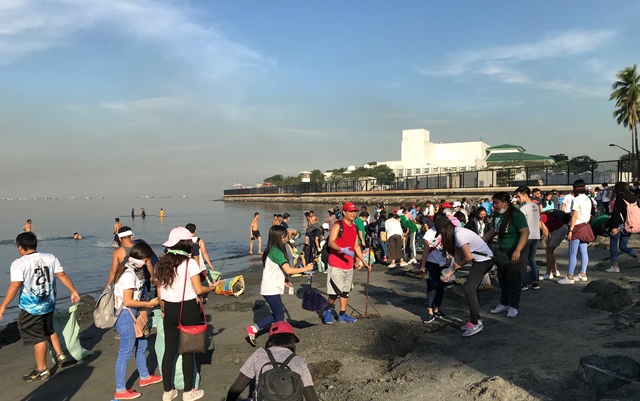One year of rehab for Manila Bay: Beyond coliform readings

A TIMELY question a year after the “Battle for Manila Bay” was launched: Who’s winning?
The government kicked off its three-phase and seven-year rehab plan for the once majestic Manila Bay last year on January 27, with hundreds joining a solidarity walk along Roxas Boulevard. CMFR noted then that reports must go into the immensity of the challenge. (See: “Battle for Manila Bay:” Another rushed rehab?”)
Media noted the anniversary this year, but with limited focus. Reports could do more evaluate how much has been achieved. Most reports seemed content to follow the government’s lead on improved water quality.
CMFR monitored primetime newscasts (ABS-CBN 2’s TV Patrol, GMA-7’s 24 Oras, TV5’s Aksyon, CNN Philippines’ News Night) and leading broadsheets (Philippine Daily Inquirer, The Philippine Star and Manila Bulletin) and select news sites from January 24 to February 5, 2020.
Cleaner but still not safe for swimming
The few reports on the anniversary of the rehab could do more to expand the perspective, as these were content with updates on the quality of Manila Bay’s water. Most reports were limited to sources from government, mostly the Department of Environment and Natural Resources (DENR).
Newspapers highlighted the significant drop in
levels of fecal coliform in different parts of the bay. The improvement was
trumpeted by Roy Cimatu, environment secretary, who said this was “reason to
celebrate.” The environment department did admit that the levels still prohibit
swimming in bay waters.
Rappler included other voices, reporting points raised by militant fishers group Pambansang Lakas ng Kilusang Mamamalakaya ng Pilipinas (Pamalakaya) (National Federation of Fisherfolk Organizations). Pamalakaya noted the continuing ecological disturbances such as fish kills, depletion of fish catch in major fishing areas and the increase of invasive bay species – which all indicate continued deterioration of water quality.
Aside from reports on water quality, 24 Oras looked at the 25 pending reclamation projects which would all impact on water quality, noting that three are close to getting a go permit. The report also observed that the environment department is not strongly opposing these despite knowing how they could affect the ecology and environment of the Bay.
Threads
Public affairs programs explored more concerns about the deterioration of the Bay, pursuing threads which newspapers and newscasts could have explored.
During its February 4 episode, CNN Philippines’ On the Record carried an inter-agency discussion with Jake Meimban, director of the Manila Bay Coordinating Office of the Environment Department, Elsie Trinidad, spokesperson of the National Housing Authority (NHA) and Paolo Pagaduan, manager of World Wildlife Fund Philippines’ Forests for water program. Their exchange surfaced valuable information which journalists could follow up or use as lead:
- Rehab remains on phase one which consists of cleanup activities and relocating informal settlers.
- About 62,000 families out of the targeted 71,000 in Metro Manila were relocated in resettlement sites in Cavite, Bulacan and Laguna, according to NHA.
- Review of the status of sewerage coverage and updates on the targeted 47% coverage by 2021.
The rehabilitation of the Manila Bay is a huge undertaking and the government deserves to be cheered for its work. But media should bear in mind that it is obviously not just limited to driving the coliform levels down. The same administration seems set to pursue the unabated reclamation for real estate development. Reclamation should focus on coastal security and environmental defense among its primary goals.
As the work to recover the Bay must go deeper than surface waters, so must media do the deep dive to be able to report the real gains of a showcase project of the Duterte administration.
Leave a Reply